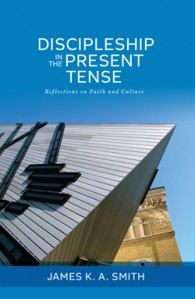The call to holy worldliness…

Revisiting the story of the Reformation is a task that all of us should set ourselves to from time to time. It’s a complex story that is something of a culmination of ongoing efforts at reform—reform envisioned by leaders as varied as St. Francis of Assisi, Jan Hus, and John Wycliffe.
In “Sanctification for Ordinary Life,” James K. A. Smith reminds us that the Reformation was not merely a theological debate. Rather, it was a broader “Christian reform movement concerned with the shape of social life—with how we understand our life coram Deo, before the face of God.”
The sanctification OF everyday life
[T]he Reformation called into question the two-tiered religion that had emerged, with monks, nuns, and priests (the “renunciative vocations”) on the top tier and everybody else mired in domestic (“secular”) life consigned to the lower level as second-class spiritual citizens. The “religious” worshiped while everyone else just worked.
In this climate, the really revolutionary impact of the Reformation issued more from Geneva than Wittenberg; calling into question this two-tiered, sacred/secular arrangement, Reformers like John Calvin and his heirs refused such distinctions. All of life is to be lived before the face of God, they said. All vocations can be holy, for all of our cultural labors can be expressions of tending God’s world. There is no “secular” because there is not a square inch of creation that is not the Lord’s.
The result is what [Charles] Taylor calls “the sanctification of ordinary life.” On the one hand, this has a leveling effect: the monk is no holier than the farmer, the nun no holier than the mother. “Religious” vocation is no longer seen as the shortcut to divine blessing; if anything, it is seen as perhaps spurning God’s good gifts. On the other hand, it’s not that the renunciative vocations are laid low; to the contrary, expectations for lay people are ratcheted up. Engagement in domestic life is no longer a free pass from pursuing holiness. Ordinary domestic life is taken up and sanctified, and renunciation is built into ordinary life.
So the butcher, the baker, and the candlestick maker are called to serve God, even as they are affirmed in their “worldly” stations. …
The dangers of overcorrection
But this “all of life is worship” principle can be taken to an extreme. … Since all of life is worship, the argument goes, then the gathered worship of the church seems, well, optional, perhaps even unnecessary. The library and laboratory are on par with the chapel, even preferred over the chapel. In this account, the “sanctification of ordinary life” becomes a directive to vacate the sanctuary. …
After the Reformation, and especially in the wake of modernity, wide swaths of contemporary Christianity tend to think of worship only as an “upward” act of the people of God who gather to offer up their sacrifice of praise, expressing their gratitude and devotion to the Father, with the Son, in the power of the Holy Spirit. …
Correcting the overcorrection
But throughout the course of its history (including the Reformation), the church has always understood worship as more than expression. Christian worship is also a formative practice precisely because worship is also a “downward” encounter in which God is the primary actor. Worship isn’t just something we do; it does something to us. Worship is a space where we are nourished by Word and sacrament—we eat the Word and eat the bread that is the Word of life. This understanding of worship is equally central to the Reformation heritage, and it is at the heart of John Calvin’s legacy.
If we fail to appreciate that Word and sacrament are specially charged conduits of the Spirit’s formative power, it would be easy to imagine that worship can happen just anywhere. On the other hand, if we appreciate that Christian worship around Word and table is a unique “hot spot” of the Spirit’s wonder-working power, then we will also appreciate that the sanctuary can’t be replaced by just any other space in God’s good world, for it is in the sanctuary that we are made into a people of praise. In communal worship we receive the unique promise of the Spirit that is tethered to Word and sacrament. …
Sanctification FOR ordinary life
Christian worship gathered around Word and table is not just a platform for our expression; it is the space for the Spirit’s (trans)formation of us. The practices of gathered Christian worship have a specific shape about them—precisely because this is how the Spirit recruits us into the story of God reconciling the world to himself in Christ. There is a logic to the shape of intentional, historic Christian worship that performs the gospel over and over again as a way to form and reform our habits. If we fail to immerse ourselves in sacramental, transformative worship, we will not be adequately formed to be ambassadors of Christ’s redemption in and for the world. In short, while the Reformers rightly emphasized the sanctification of ordinary life, they never for a moment thought this would be possible without being sanctified by Word and sacrament. …
If we are going to be caught up in God’s mission of remaking the world, thereby sanctifying ordinary life, we need to be sanctified by the Spirit through Word and sacrament. If all of life is going to be worship, the sanctuary is the place where we learn how.
Philosopher/theologian James K. A. Smith teaches at Calvin College in Grand Rapids, Michigan. He is the author of numerous books, including Imagining the Kingdom: How Worship Works. “Sanctification for Ordinary Life” was originally published in Reformed Worship and is included in a recently published collection of essays, Discipleship in the Present Tense: Reflections on Faith and Culture.


 April 8, 2014
April 8, 2014 







Comments are closed.